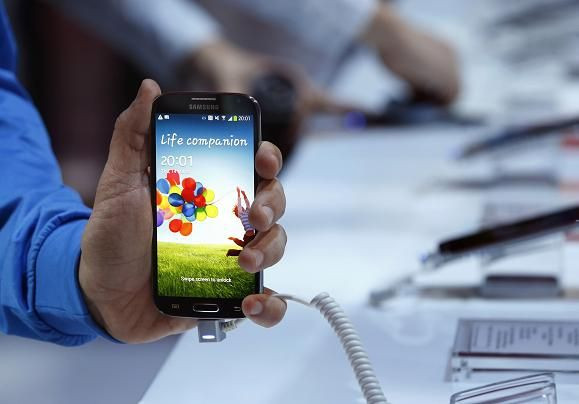Samsung Galaxy S4 Software Update: 5 Types Of Users Who Will Benefit From Micro SD App Installation

Samsung Galaxy S4 owners disappointed by the lack of internal memory in their handsets will be happy to know that the Korean manufacturer is attempting to resolve the issue with a new software update.
The update brings a number of improvements and updated features to the Samsung Galaxy S4, but probably the most important enhancement is that users can now install applications onto an SD card, which will also let them transfer preinstalled apps to their SD card, freeing up previously occupied ROM for personal use. Additionally, Samsung has freed up some additional storage by decreasing the size of the Android operating system on the Galaxy S4. This brings most users up to 9.23GB of available storage from 9.15GB.
Having fewer than 10GB of available storage was one of the main complaints early adopters of the Samsung Galaxy S4 had as the device is advertised as having 16GB. Samsung first argued that the many “innovative” new features on the Galaxy S4 would benefit the user experience despite taking up a considerable amount of memory. But after the BBC Watchdog program called Samsung out on its shady practice, the company announced that it would work on securing more memory space through further “software optimization.”
Samsung Galaxy S4 owners should especially enjoy being able to install and transfer apps onto a micro SD card as the Galaxy S4 handset can accommodate external storage up to 64GB.
Let’s take a look at the types of users who will benefit most from being able to transfer apps onto a micro SD on their Samsung Galaxy S4 handsets.
Gamers
Mobile gaming is a rapidly growing industry with many games now that are just as graphically detailed as games on computers or consoles, which means they often take up a considerable amount of space. Gamers in particular complained that the installation of certain memory intensive games quickly ate away at their ROM after installing just a few games. These users will likely find the micro SD transfer option as the simplest solution to this problem.
Heavy App Users
Similar to games, many apps can be comprised of large files that quickly take up ROM; users who love to download all the latest apps may soon find their internal storage running low. One of the main reasons Android decided to take away device to MicroSD transfer was because it often disabled certain apps from working properly. However, Galaxy S4 users will now at least have the option of keeping apps that are better suited for internal storage on their Samsung Galaxy S4 devices and transferring apps that fair well on external storage to a micro SD.
Users who like to back up their devices
Many users prefer having apps installed on their micro SD cards, to protect their data in the event their hardware is no longer functional. With the Galaxy S4 -- users can easily switch their micro SD card into another device. This takes away the hassle of having to redownload and reinstall apps and media one by one, which is common when transferring Google Play purchases from one device to another.
Users with lots of music and video on their devices
While the Samsung Galaxy S4 update only specifies that apps can be installed and transferred to a micro SD, those who have a lot of media on their devices should also benefit from the new ability. In addition to apps, anything downloaded from the Google Play store, such as music and video, was not transferrable to a Micro SD. This remains in place for Google Play media tracks; however, with users now able to install and move apps, there is more internal space available for music and movie buffs to download tracks from the Google Play store. Additionally, users also have the option of putting tracks not downloaded from the Google Play store on their micro SD cards.
Developers
While developers are likely able to find ways to bypass a blocked micro SD transfer, they too should benefit from not having to rig their Samsung Galaxy S4 devices to do such a simple task. Both the Google Edition, which will soon be released for AT&T and T-Mobile, and the developer’s edition, which will soon be released for AT&T and Verizon, still have just 16GB of internal storage. However, just as the Google Edition Galaxy S4 will run a stock Android OS, it will likely have a little more space free without all of the Samsung bloatware. But developers will likely need a lot more than 9GB of internal storage in order to create firmware. Developers will also benefit from how other Galaxy S4 users are more likely to download their apps and firmware without fear that it will take up too much space on their devices.
© Copyright IBTimes 2025. All rights reserved.





















